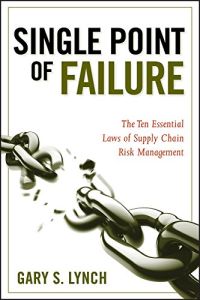Join getAbstract to access the summary!

Join getAbstract to access the summary!
Gary S. Lynch
Single Point of Failure
The Ten Essential Laws of Supply Chain Risk Management
Wiley, 2009
What's inside?
CEOs must pay attention to risks that lurk within their supply chains.
Recommendation
The captain of the Titanic ignored at least five warnings that unusual conditions in the Gulf Stream made it dangerous to steam at high speeds through the North Atlantic – if only he had paid attention. CEOs usually don’t seek or receive advance alerts of the looming icebergs that could affect their supply chains, the interconnected links that enable companies to move raw materials to production facilities and thence to customers. Now, you can be prepared, thanks to supply chain risk management expert Gary S. Lynch, who details the 10 best ways to manage and mitigate supply chain risk. getAbstract recommends his insights – despite a peppering of jargon – to executives handling all aspects of corporate life, including risk, manufacturing, compliance, operations, logistics, outsourcing, procurement and security.
Summary
About the Author
Gary S. Lynch, author of At Your Own Risk, leads Marsh Risk Consulting’s Supply Chain Risk Management Practice and directs its Global Pandemic Response Center.

















Comment on this summary